Way to grow! What to plant right now for spring bounty

Ah, sunshine, so nice of you to join us at long last. For this weekend, we are turning a sharp and not-a-little overdue corner into spring.
And now it’s arrived, no-one’s quite sure what to expect: will spring be as long as usual and slide into summer a little late, or will it concertina up, rushing through everything and then settle back down for a normal start to summer? It’s anyone’s guess, but what we do know is that after impersonating November for months, the weather is finally with us.
There are many things we can do right now to overcome this late start and make our gardens bountiful. The first thing I’d suggest, is not to panic. Gardening is delightfully non-linear: there is always something to be anxious about, and likewise, a gardening will always give you pleasure if you’re open to it.
Let us look on the sunny side of the street, even if our feet are anchored in a damp corner of the garden. This, ladies and gentlemen, is it: we should get out into the kitchen garden right now and enjoy it.
To give us a little guidance, I’ve enlisted some bright horticultural minds to share their ideas about what they (and we) can be doing this weekend and in the days ahead.
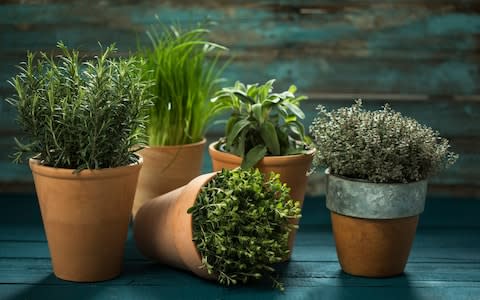
Kim Hurst, The Cottage Herbery
Split container mints
This weekend, I’ll be splitting mints. Some of my container mints are growing well now but mint leaves have a tendency to grow increasingly towards the edge of the container - thankfully they are easy to refresh. Tip your mint out of the pot and cut straight through the middle of the plant to make two semi-circular halves.
Knock off some of the old compost from the roots and put two good handfuls of fresh food-rich compost into the bottom of the container, more if you are upping the pot size.

Then taking half a plant in your hands like you might a burger, bend the curved sides back until they are straight, repeat with the other half, then put the once-curved sides against each other and pop them back into the container and fill in with more compost. Water well. The growth will now mainly be in the centre and will expand towards the edges over the year.’
Charles Dowding No-Dig guru, youtube sensation

Get seedlings going undercover
This weekend is perfect for getting yourself stocked up with seedlings ready to go out in a few weeks and preparing the bed for when the plants are ready. I’ll be sowing cucurbits – squash, melons, cucumber – as well as sweetcorn and some salads, all under cover.
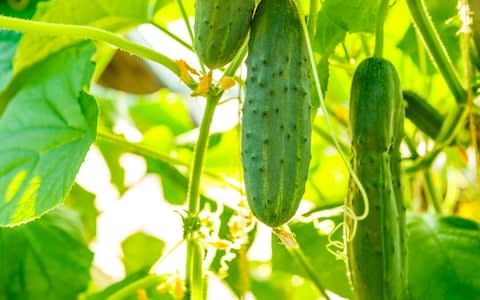
Cucurbits in particular grow so quickly that they’ll catch up on the late spring start in no time. The key to healthy plants is avoiding fluctuating day-night temperatures after germination, so keep them undercover – on a sunny window sill is great – to protect them from cooler spells to come, for there will be one or two. Water compost-filled modules and pots outside before you sow – this saves getting wet surfaces in the house, and you shouldn’t need to water again until they’ve germinated.
Prepare your beds
Once that’s done, I really think we should all get ahead now with a little weeding to prepare clean beds for planting out and sowing direct in a week or two’s time. The sunny, dry weather is perfect for hoeing, frazzling any weed seeds you hoe in seconds.
Lia Leendertz, writer and allotmenteer

Buy a soil thermometer
If you don’t have one, pop out early and buy a soil thermometer. You never know when it might come in handy (see below). If your soil has reached 6C you can sow most things direct. Salad leaves, carrots, chard, spinach and beetroot are among the many I’ll be sowing this weekend.

Pollinate your fruit blossom
Peaches, nectarines, apricots and Asian pears may all be flowering, encouraged by the odd warm hour and the longer days. The cool March and early April means even fewer pollinators than normal are around, so take a soft paintbrush to the centre of as many blossoms as you can to spread pollen and up your harvest.
Matthew Oliver, RHS Hyde Hall Horticulturalist

Plant onion sets
At my allotment and at RHS Hyde Hall, I’ll be planting both onion sets and shallots over the next few days. Ordinarily they would have gone in weeks ago, but it’s not too late and they should catch up with a little luck.
Move perennial herbaceous plants
It’s a good few weeks later than usual, but it’s a great time to be lifting and moving perennial edibles – things like garlic, chives, Egyptian walking onions, and even a few of the woody herbs. But be quick!
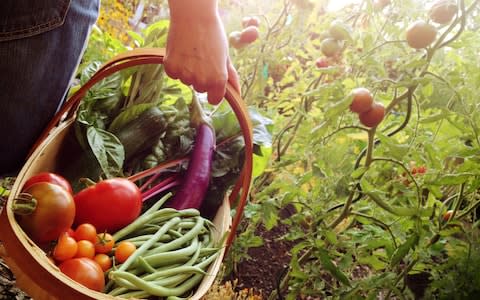
Try something new
Every year, I like to try new things – it keeps your mind open to the look of new plants in the garden and new flavours in the kitchen. The new Global Growth Vegetable Garden here at RHS Hyde Hall has given me the opportunity to do even more of that, and the one I’m looking forward to trying most is Caucasian spinach (Hablitzia tamnoides), a very hardy, semi-shade loving perennial climber with spinach-like leaves. We have some seedlings to plant out but if you give seeds (try www.incrediblevegetables.co.uk) a week or so in the freezer to mimic the cold they need to germinate, they should start well.
Jane Scotter, Fern Verrow biodynamic farm

Be thankful
Whatever comes to us is always just fine. We have to accept it. It may feel like a pain, but there are always good things that come from it. For example, this late, wet spring means both top fruit and soft fruit are growing well with plentiful water, so if summer sunshine comes in June, there’s every chance this will be a fine year for fruit.

Sow spinach
It’s a great time to sow spinach too. Of course, sowing this late means the weather may turn hot and encourage it to bolt once it starts growing well in a month or two’s time but if so, you can always pick it at the first sign of it running to seed and use it as a baby salad leaf.

Enjoy
So the party is upon us, even if later than expected. No matter; as you can see, there is much we can do this weekend and in the days that follow to ensure that summer and autumn in the kitchen garden – however large or small – is abundant. One thing we really must do, is not be in too much of a hurry to catch up that we forget to enjoy the “doing”.
Jack Wallington, garden designer & writer

Get some quick returns
I know it may be a little cool still, but I’ve been holding off on my salad bed for long enough: it’s time to sow lettuce, radish and spring onions that will all give me a quick return. As far as I’m concerned it’s worth the gamble now. If we really have turned the corner into spring it helps me play catch up, and if not I’ve only lost a few seeds.
Sow some flowers
I also grow a lot of flowers, both for their visual loveliness and to cut for the house, but also to attract beneficial insects for pollination and to predate on potential pests of my edible plants, so I’ll be making time to sow calendula, nasturtium and zinnias amongst others.

Move and divide dahlias
I know this might be a little controversial, but if you live somewhere relatively warm like I do in London, you may not have lifted your dahlias. If not, and you planned to move or divide them, I reckon it’s just about ok to do so know - I certainly shall be this weekend. The tubers are edible, as are the flowers, though I admit, I grow them mostly for their looks.
Monty Don, broadcaster and writer

Sow parsnips and radish
Parsnips and radish can be sown together, in the same drill. Parsnips are slow to get going but radish will quickly germinate and can be eaten before they compete with the emerging parsnips for space and nutrition.
Sow broad beans and peas
Both broad beans and peas should be perfectly happy in whatever weather comes our way in May but hold back on climbing or French beans for another couple of weeks – it will get cold again before it properly heats up.
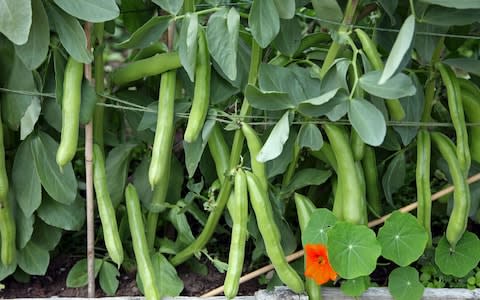
Make a seedbed
Create a seedbed this weekend and sow leeks and all leafy brassicas in it. This will save on plastic, get a good root-to-soil relationship with the seedlings and cuts down on handling. Have some fleece to hand to protect the seedlings if the weather cuts up rough.
Martyn Cox, QVC garden presenter and writer

Plant strawberry plugs
This weekend I’m planting strawberry plugs into my garden. It’s the perfect time for it, as the soil temperature is just perking up. Mine are all of one variety - ‘Just Add Cream’: I grew them for the first time last year and had to have more.

In my view, they are the most ornamental strawberry of all with beautiful pink flowers, adding a bit of a swagger to the garden. The flavour is incredible too, as is the length of season - I picked their sweet aromatic fruit from May until early November. I grow most of my strawberries in containers and grow bags, but they’ll do as well in a bed if you prefer.
Anne Marie Owens, Head Gardener, Raymond Blanc’s Garden School and Belmond Le Manoir

Strim, mow and edge
After such a rainy few months, the first signs of sunshine will have everything growing well, not just the vegetables. So find a little time to sharpen up path edges and lawns around your beds as it makes everything else look so much better and more encouraging.

Spruce up your herbs
Every spring, we carry out a stock take in the herb garden to identify any old or tired plants so that we can replace them with new plants to keep young, leafy growth plentiful. This late spring means that now is a good time to do it, and with new plants available from nurseries it’s easy to spruce up your herb beds and containers.
Force sea kale
If you grow sea kale (and if not, you should: try www.pennardplants.com for plants), they will be just showing signs of life around now, later than usual. Over the next week, I’ll be mulching our plants with compost, and placing a rhubarb forcer (or similar light-excluding object) over each plant to raise the temperature and force the new shoots for the kitchens.
Jojo Tullah, writer and gardener

Get your hands in the soil
Firstly, I’ll be pushing my hands into the soil – getting them right down into it to see how the temperature is a couple of inches below the surface. Here in London, a couple of days sun should have warmed things a little. This is the best way I know for judging whether it’s OK to sow direct or plant out delicate seedlings.
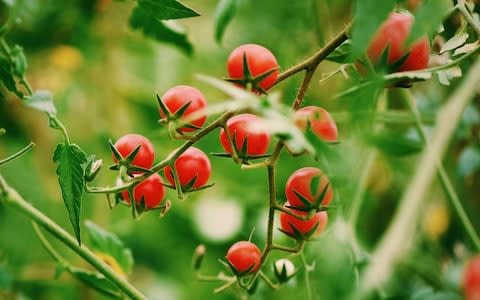
Mulch perennials
I’ll be emptying the “dalek” of compost and using it as a nourishing mulch around the cardoons, blackcurrants, wineberries and other perennials to feed the plants, repress weeds and also retain some of the plentiful moisture in the soil. I’ll also be spreading wood ash from the fire around the fruit to give it a potassium boost to encourage good fruiting; together, this is the best way to give your perennial edibles a great start to the growing season.
Sow short-season tomatoes
Another must for the weekend for me is to be sowing short-season tomatoes. I grew them last year for the first time, using seeds from www.realseeds.co.uk, and they were a revelation. ‘Grushovka’ in particular did astonishingly well outside, producing really well and much more quickly than most varieties. Start them off now undercover and they’ll still fruit plentifully before summer is over.
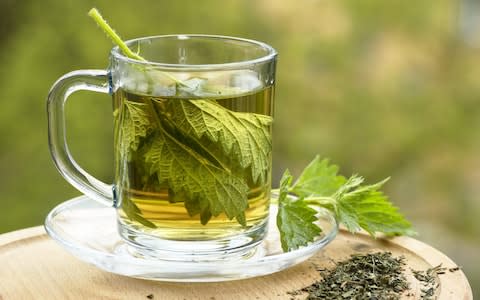
Make nettle tea
The newly arrived sunshine will be encouraging to the already awoken nettles, so I’ll be using some to make nettle tea for a garden tonic (it feed plants with nitrogen and other essential nutrients) and keeping some nettle tips back for an omelette.
Terry Walton, Radio 2 allotmenteer
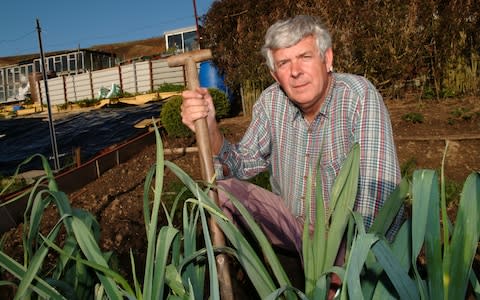
Prioritise
After a dreadful March, we now have to decide on what to gamble. You can’t catch up with everything, so sit down with a cup of tea and prioritise your absolute favourites, the things you eat most of and look forward to most. If you haven’t sown potatoes, get some earlies in at least and they should be up and out before blight comes along. Similarly, shallots and onions can go in if you haven’t planted them already. And for me, broad beans are a must: get some in now and they’ll make up at least some of that lost time.
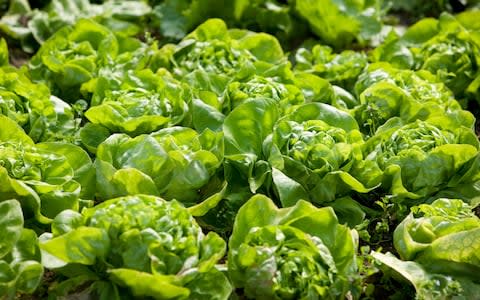
Sow cut-and-come-again salad leaves
If you are sowing salads, consider growing some as cut-and-come-again leaves rather than hearting lettuces and they’ll be on your plate sooner as well as giving repeat harvests.
Start long-season crops
I know it can be hard to look too far ahead when you want something to eat soon, but sprouts and leeks need a long growing season, so get them sown soon to give yourself a chance of success.

